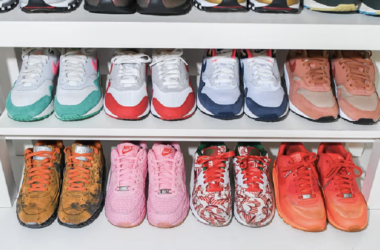Computer technology has changed the way we create and consume art. For instance, powerful computers make it ever easier to produce animations that look incredibly lifelike. Likewise, that same technology has changed how we listen to music. Crystal-clear digital recordings can make you feel like you are sitting right next to the musicians. Yet not everybody likes the technology. Some prefer art presented in less-than-perfect forms.
Where do you stand? Do you prefer digital music files or old vinyl records? Do you prefer fifties era animation or its photorealistic 21st-century counterpart? There is no right or wrong. People have different tastes and preferences. That is one of the things that makes life so interesting.
Western Animation vs. Japanese Anime
Anime’s birth as a commercial art form dates to the early 20th century. Japanese artists, already seeing the influence of Western art on animation didn’t like what they saw. They wanted to maintain Japan’s unique style in a world that was progressively leaning toward Western animation.
One of the things early Japanese animators were so proud of is that their creations were more realistic. Unlike Western artists, anime creators did not exaggerate certain features to make their characters more appealing to children. They drew the characters with realistic proportions, normal clothing, etc.
Anime and manga have both stayed true to their roots all these years, according to the artists behind the Umai anime clothing brand. Umai’s original artwork is drawn the same way anime and manga have been drawn since the earliest days.
On the other hand, Western animation continues to strive for perfection. Modern studios are creating animation that is almost photorealistic. It is getting increasingly difficult to discern between animation or live action in films and TV. Do you prefer that, or the less-than-perfect style of Japanese anime?
Digital Music, Live Music, and Records
Though technology has influenced nearly every form of art, the results of that influence are most notable in music. There was a day when all music was live. Recording technology just didn’t exist. Back then, music was as raw as it could be. There were no do-overs; the audience heard whatever was played in the moment.
With the advent of recording technology came the ability to record things multiple times until it was right. Still, what people heard was less-than-perfect. Any fan of vinyl records can tell you that the sound their record players produce cannot rival digital music in terms of realism. But they don’t care. They love the vinyl record sound.
Today’s recording and playback technology is all digital. It offers us crystal-clear recordings and the ability to manipulate just about everything in them. Specific instruments can be isolated and enhanced. Sounds that are not quite right can be adjusted to bring them back on key. Even timing can be corrected in post-production.
Technology is so advanced that you don’t even need to have a whole lot of talent to make it as a professional musician. If a recording label can package you in a way that appeals to consumers, computers can make up for your inability to sing or play. But that lack of talent will show up at every live show you perform.
It is More Real
Perhaps the appeal of less-than-perfect art is its reminder of real life. Digital technology makes things too perfect. When things are too perfect, they don’t leave room for being human. Whether it is animation or music, a less-than-perfect presentation leaves a lot more room for interpretation. At least that is one explanation for why people still appreciate old school animation and vinyl records.






